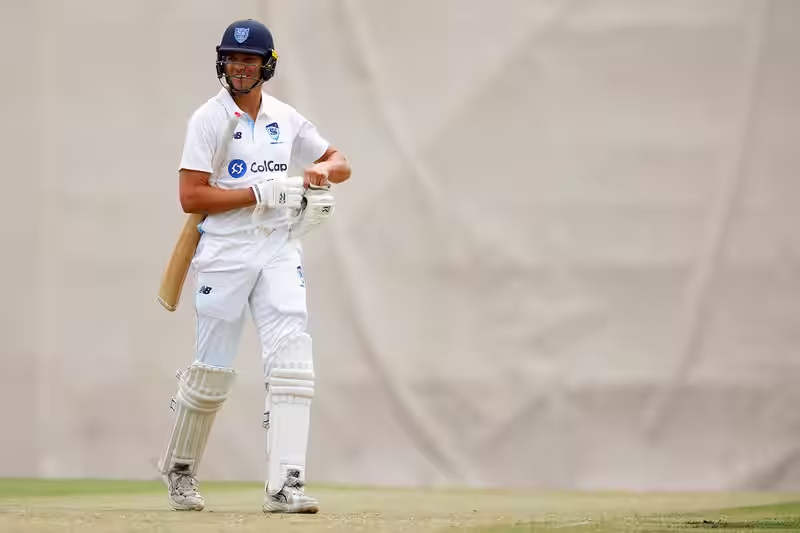Table of Contents
- What Happened on the Field?
- Why Was Chris Green Sanctioned?
- Cricket Australia’s Official Stance
- How Umpire Reviews Work in High-Pressure Moments
- Green’s Response and Past Conduct Record
- Sources
What Happened on the Field?
During a tense domestic T20 match in Australia, all-rounder Chris Green found himself at the center of a rare on-field controversy that ultimately led to a formal code of conduct breach.
The incident unfolded when Green was initially given out caught behind. Accepting the decision, he began walking off—only for the on-field umpires to quickly convene and reverse the call, ruling him not out after realizing the ball had brushed his pad, not the bat.
While such reversals are uncommon, they’re permitted under ICC playing conditions if both umpires agree an error was made before the next ball is bowled. However, what followed raised eyebrows: Green reportedly expressed visible frustration toward the officials, gesturing and questioning their process in a manner deemed “disrespectful” under Level 1 of Cricket Australia’s Code of Conduct.
Why Was Chris Green Sanctioned?
Cricket Australia (CA) confirmed that Green was charged with a Level 1 breach for “showing dissent at an umpire’s decision.” Though the dismissal was overturned in his favor, officials determined his reaction crossed a line of acceptable on-field behavior.
Under CA’s disciplinary framework, a Level 1 breach typically results in a fine (often 25–50% of match fees) or demerit points, but not suspension—especially for first-time or minor offenses.
Notably, Green did not contest the charge, opting instead to accept a formal reprimand and a small financial penalty, allowing him to remain available for selection.
Cricket Australia’s Official Stance
In a statement released Tuesday, CA backed the umpires’ decision-making process while acknowledging room for improvement in timing.
“While the reversal of the decision was procedurally correct under the playing conditions, we recognize that such interventions should ideally occur more swiftly to avoid confusion and maintain the flow of the game,” the statement read.
CA emphasized that respect for officials remains non-negotiable, regardless of whether a decision ultimately benefits a player. “The spirit of the game depends on mutual respect—even in high-stakes moments,” the release added.
How Umpire Reviews Work in High-Pressure Moments
According to ICC and CA protocols, umpires may correct a clear and obvious error—such as misjudging bat vs. pad—before the next legal delivery. This “umpire consultation window” is brief but critical.
Here’s how the process typically unfolds:
- An on-field decision is made (e.g., “out” caught behind).
- One or both umpires notice a potential error (e.g., no edge on Hot Spot/Snicko).
- They confer quietly—often within seconds.
- If consensus is reached, the original decision is reversed.
- No DRS or third umpire is involved unless a team requests a review.
While rare in T20s due to pace of play, such reversals have precedent—most notably in the 2023 BBL when a similar correction saved a batter from an incorrect stumping call.
Green’s Response and Past Conduct Record
Chris Green, known for his composed demeanor and leadership in franchise leagues worldwide, has maintained a clean disciplinary record throughout his career. Team sources describe the outburst as “uncharacteristic” and fueled by adrenaline during a must-win match.
Green later posted on social media: “Frustration got the better of me for a moment. Huge respect to our umpires—they’ve got a tough job. Lesson learned.”
Coaches have since worked with him on emotional regulation during high-pressure scenarios, a common focus area for senior players in short-format cricket.
